New JGI Data Policy Announcement
Read our JGI Data Policy [Read More]
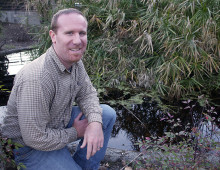 Departments of Microbiology, and Civil, Environmental and Geodetic Engineering, The Ohio State University, Columbus, OH Collaborated with JGI since 2001 How long have you collaborated with the JGI and on which projects? Since 2009 as head of my own lab, and since 2001 as a PhD student (with Penny Chisholm at MIT) working on the initial marine Prochlorococcus and… [Read More]
Departments of Microbiology, and Civil, Environmental and Geodetic Engineering, The Ohio State University, Columbus, OH Collaborated with JGI since 2001 How long have you collaborated with the JGI and on which projects? Since 2009 as head of my own lab, and since 2001 as a PhD student (with Penny Chisholm at MIT) working on the initial marine Prochlorococcus and… [Read More] Jillian Banfield, PhD is a prominent geomicrobiologist and biochemist, a UC Berkeley Professor, a Berkeley Lab Earth Sciences Division staff scientist, and a long time user of the DOE Joint Genome Institute’s resources through the Community Science Program (CSP) and the Emerging Technologies Opportunities Program (ETOP). In this short interview, Jill shares her perspective how… [Read More]
Jillian Banfield, PhD is a prominent geomicrobiologist and biochemist, a UC Berkeley Professor, a Berkeley Lab Earth Sciences Division staff scientist, and a long time user of the DOE Joint Genome Institute’s resources through the Community Science Program (CSP) and the Emerging Technologies Opportunities Program (ETOP). In this short interview, Jill shares her perspective how… [Read More]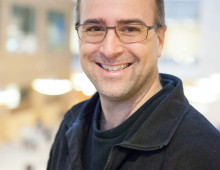 CIFAR Scholar and Associate Professor, University of British Columbia Department of Microbiology & Immunology, Life Sciences Institute I have collaborated with the JGI since 2002 before the CSP program came online. These collaborations have spanned my postdoctoral years with Ed DeLong [now at the University of Hawai’i, Mānoa] and my time as an independent investigator at the University… [Read More]
CIFAR Scholar and Associate Professor, University of British Columbia Department of Microbiology & Immunology, Life Sciences Institute I have collaborated with the JGI since 2002 before the CSP program came online. These collaborations have spanned my postdoctoral years with Ed DeLong [now at the University of Hawai’i, Mānoa] and my time as an independent investigator at the University… [Read More]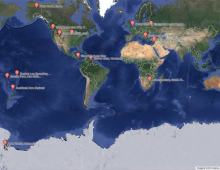 More than four decades ago, the first celebration of Earth Day raised the idea of protecting the environment to a greater public awareness. Today, the annual event is a reminder of the longstanding goal to provide a cleaner, healthier and sustainable environment for everyone to live in. Here at the U.S. Department of Energy Joint… [Read More]
More than four decades ago, the first celebration of Earth Day raised the idea of protecting the environment to a greater public awareness. Today, the annual event is a reminder of the longstanding goal to provide a cleaner, healthier and sustainable environment for everyone to live in. Here at the U.S. Department of Energy Joint… [Read More]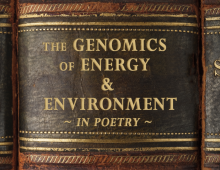 In honor of National Poetry Month, we’re celebrating an underutilized method of communicating our science: poetry. According to Merriam-Webster, poetry is defined as, “writing that formulates a concentrated imaginative awareness of experience in language chosen and arranged to create a specific emotional response through meaning, sound, and rhythm.” As proof that science can (and has)… [Read More]
In honor of National Poetry Month, we’re celebrating an underutilized method of communicating our science: poetry. According to Merriam-Webster, poetry is defined as, “writing that formulates a concentrated imaginative awareness of experience in language chosen and arranged to create a specific emotional response through meaning, sound, and rhythm.” As proof that science can (and has)… [Read More]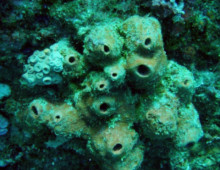 Medical compounds harvested from a marine sponge are actually produced by symbiotic bacteria living in the sponges. The Science: The research team used single-cell genome analysis, and metagenomic sequencing to find that just two bacterial tenants of a marine sponge, Theonella swinhoei, make medically important compounds called polyketides. Both bacteria belong an uncultivated genus, Enthotheonella. The research… [Read More]
Medical compounds harvested from a marine sponge are actually produced by symbiotic bacteria living in the sponges. The Science: The research team used single-cell genome analysis, and metagenomic sequencing to find that just two bacterial tenants of a marine sponge, Theonella swinhoei, make medically important compounds called polyketides. Both bacteria belong an uncultivated genus, Enthotheonella. The research… [Read More]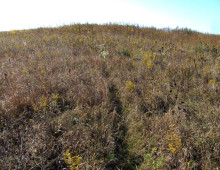 For soil microbiology, it is the best of times. While no one has undertaken an accurate census, a spoonful of soil holds hundreds of billions of microbial cells, encompassing thousands of species. “It’s one of the most diverse microbial habitats on Earth, yet we know surprisingly little about the identities and functions of the microbes… [Read More]
For soil microbiology, it is the best of times. While no one has undertaken an accurate census, a spoonful of soil holds hundreds of billions of microbial cells, encompassing thousands of species. “It’s one of the most diverse microbial habitats on Earth, yet we know surprisingly little about the identities and functions of the microbes… [Read More]